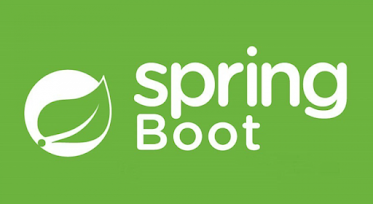Mastering Spring MVC and Thymeleaf: Building Dynamic Web Applications
Spring MVC and Thymeleaf are powerful tools for developing dynamic and interactive web applications in Java. Spring MVC provides a robust framework for handling HTTP requests and responses, while Thymeleaf simplifies front-end development with its server-side templating capabilities. In this article, we’ll explore how to use Spring MVC with Thymeleaf to build responsive and user-friendly applications.
1. What is Spring MVC?
Spring MVC (Model-View-Controller) is a module of the Spring Framework designed to build web applications. It separates the application logic into three interconnected components:
- Model: Manages application data.
- View: Responsible for rendering the UI.
- Controller: Handles user input and controls the application's flow.
2. What is Thymeleaf?
Thymeleaf is a Java-based templating engine that integrates seamlessly with Spring MVC. It allows you to create dynamic web pages using server-side templates. Its key features include:
- Simple syntax for dynamic content rendering.
- Support for HTML5 and modern web standards.
- Integration with Spring for seamless data binding.
3. Setting Up Spring MVC and Thymeleaf
To get started, add the following dependencies to your pom.xml file:
<dependency>
<groupId>org.springframework.boot</groupId>
<artifactId>spring-boot-starter-web</artifactId>
</dependency>
<dependency>
<groupId>org.springframework.boot</groupId>
<artifactId>spring-boot-starter-thymeleaf</artifactId>
</dependency>
3.1 Project Structure
Your project structure should resemble the following:
src/
├── main/
│ ├── java/
│ │ ├── com.example/
│ │ │ ├── controller/
│ │ │ │ └── HomeController.java
│ │ │ ├── model/
│ │ │ │ └── User.java
│ │ │ └── Application.java
│ ├── resources/
│ │ ├── templates/
│ │ │ └── home.html
│ │ └── application.properties
4. Creating a Basic Spring MVC Application
4.1 Controller
Create a controller to handle HTTP requests:
package com.example.controller;
import org.springframework.stereotype.Controller;
import org.springframework.ui.Model;
import org.springframework.web.bind.annotation.GetMapping;
@Controller
public class HomeController {
@GetMapping("/")
public String home(Model model) {
model.addAttribute("message", "Welcome to Spring MVC with Thymeleaf!");
return "home";
}
}
4.2 Thymeleaf Template
Create a Thymeleaf template in the resources/templates folder:
<!DOCTYPE html>
<html xmlns:th="http://www.thymeleaf.org">
<head>
<title>Home</title>
</head>
<body>
<h1>Thymeleaf Example</h1>
<p th:text="${message}">Default Message</p>
</body>
</html>
4.3 Running the Application
Start your application, and visit http://localhost:8080/. You should see the welcome message rendered dynamically using Thymeleaf.
5. Using Thymeleaf Features
5.1 Iterating Over a List
Add a list to the model and display it in the template:
@GetMapping("/users")
public String users(Model model) {
List<String> users = List.of("Alice", "Bob", "Charlie");
model.addAttribute("users", users);
return "users";
}
<ul>
<li th:each="user : ${users}" th:text="${user}">User</li>
</ul>
5.2 Conditional Rendering
Render content conditionally using Thymeleaf:
<p th:if="${isLoggedIn}">Welcome back!</p>
<p th:unless="${isLoggedIn}">Please log in.</p>
6. Form Handling with Thymeleaf
Create a form in Thymeleaf and bind it to a model:
<form th:action="@{/submit}" th:object="${user}" method="post">
<label>Name:</label>
<input type="text" th:field="*{name}" />
<button type="submit">Submit</button>
</form>
Create a POST handler in your controller:
@PostMapping("/submit")
public String submit(@ModelAttribute User user, Model model) {
model.addAttribute("name", user.getName());
return "result";
}
7. Best Practices
- Organize templates in subfolders for better maintainability.
- Use Thymeleaf fragments for reusable components like headers and footers.
- Leverage Spring’s validation framework for form validation.
Conclusion
Spring MVC and Thymeleaf together offer a powerful solution for building dynamic and user-friendly web applications. With their easy integration and flexibility, you can create interactive applications that meet modern web standards. Start exploring these technologies today to enhance your Java web development skills!
Stay tuned for the next article in our Spring Framework Series, where we’ll dive into even more exciting features of Spring Boot!






No comments:
Post a Comment